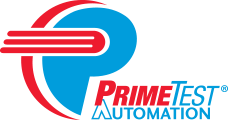When a leading manufacturer of automotive drivetrain components was presented with an opportunity to grow their business, they approached PrimeTest Automation to analyze their current production process and develop a solution that could help them meet their new production volume requirements.
Their current process had been in place for more than 20 years and relied heavily on a labor-intensive, manual process. A trained operator was producing a finished part every 2 minutes, requiring 2 operators to meet the current 80K unit production volumes. With the volumes projected to increase to 400K units annually, it would require up to 7 operators to meet these new requirements.
Additionally, because they processed these compoents manually, the liklyhood for inconsistances in the final product and overall quality issues was higher than with an automated process, not to mention making production planning more difficult. These factors contribute to downtime between batches, greater amounts of inventory on hand, and makes the QA process more difficult.
Overall, the process was inefficient and needed to be updated with modern production techniques. They looked to PrimeTest Automation as an experience systems integrator to implement part handling and inspection processes using traditional components such as PLCs and robotics, as well as vision inspection and data collection.
The Solution
Combining PrimeTest Automation’s experience with robotics, vision inspection, controls, and small-part handling, PrimeTest Automation developed a more efficent, automated process.
PrimeTest Automation's system features two Fanuc LR Mate 200iD robots used for material handling and machine tending. These robots move the customer's product through a series of process operations involving material blanking and bonding and then through final vision inspection utilizing a Keyence IV-500MA vision sensor.
Additionally, remote monitoring using a remote access VPN device integrated into the machine control system allows PrimeTest Automation to support the customers use of the system from our facility located over 1,000 miles away from the customers location. With this remote access, we have access to more than 17 Ethernet devices loacted within the system. These devices include programmable safety devices (area scanners), programmable logix controllers, servo and stepper drives, vision systems, and remote I/O modules.
PrimeTest Automation’s robotic assembly system increased the output of the customers' production process to 3.75 units per minute, meeting the customers projected volumes with just 1 operator tending the system. In addition, the automated process yielded a more consistent final product. To learn more about PrimeTest Automation’s robotics experience and how we can help you develop a custom integrated system, visit our robotics page or request a quote.



 PrimeTest Automation will consistently provide products and services utilizing the latest technologies that meet or exceed the requirements and expectations of our customers. We will actively pursue improvements in quality through programs that benefit the growth of each employee and systems that promote efficiency throughout our organization.
PrimeTest Automation will consistently provide products and services utilizing the latest technologies that meet or exceed the requirements and expectations of our customers. We will actively pursue improvements in quality through programs that benefit the growth of each employee and systems that promote efficiency throughout our organization.